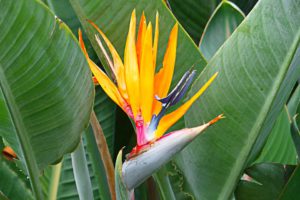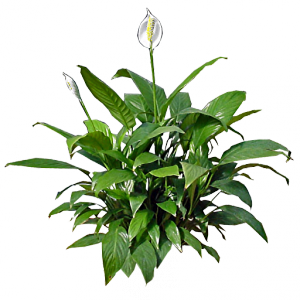Beautifying Small Garden Spaces

Living in an apartment does not mean you have to give up on your dreams of having a garden. While your space may be limited, with careful and proper planning you can turn that limited space into a work of art that says home sweet home.
It is good to think outside the box getting creative as we move away from the old way of thinking that having a garden is only meant to be enjoyed by those who have sufficient space.
Though apartment gardens are gardens on a small scale, with these types of gardens you can still make a huge impact that will give that WOW.
Tieing it all together
So how can we tie all of this together when it comes to utilizing that limited space?
Container Gardening
A container garden is a great way to make full use of and beautify that limited space.
Advantages of having a container garden
The advantages of having a container garden includes
- Choosing decorative pots that complements furniture pieces
- Plants that are grown in a controlled environment
- No exposure like outdoor garden plants which are exposed to the elements
- No need to worry about weeds that are unsightly and can be laborious keeping them under control
- Shifting and moving your pots around for a different look and feel
- Cost-effective-meaning these gardens are easy to maintain
- Restricting a plants growth that will continue to complement your apartment as it matures
- Limited pest and disease issues
The disadvantage of a container garden
- A limited choice of plants because of light requirements
- Plants are limited as far as their roots getting water because they are confined to containers and is depending on you to keep them well watered.
- Your plants will also be depending on you to provide nutrients such as fertilizer
- Pots may restrict plants growth
- Pots can become heavy to shift or move around as plants mature
The advantages of having gardens of this sort outnumber the disadvantages which means these gardens are worth the investment.
Type of containers
- Floor containers
- Countertop containers
- Hanging Baskets
When choosing containers, containers should fit comfortably in the space it’s placed.
Floor containers or decorative pots can be installed on the balcony or in the corners of your apartment. If there is a large enough space near a sofa or some other piece of furniture that may be in the middle of the floor a pot can be placed in this space to bring a continuous flow. It is good to mix it up a bit.
Ensure that your containers have drain holes to allow excess water to drain and saucers to collect this water. Saucers should be emptied because stagnant water is a breeding ground for mosquitoes.
Countertop containers or pots can house these areas as they sit comfortably on your counters. The size of these containers can be anywhere from 6 inches or larger as they sit comfortably on the counter.
Ensure that your containers have drain holes to allow excess water to drain and saucers to collect this water. Saucers should be emptied because stagnant water is a breeding ground for mosquitoes.
A hanging basket is also great and can be placed on tables and stands or can be mounted on the walls. When mounting hanging baskets on the wall use plants that require very little water because basket that is mounted on walls and other areas of your home don’t have saucers.
Light requirements of indoor plants
Knowing the light requirements of your indoor plants is the difference between your plants growing nice and healthy or becoming sickly and dying and the last thing anyone wants is to invest time and money into a project that does not work out or is not a success.
All plants need light to survive but the degree or the intensity of lighting is different. Some plants love high to medium light and there are those that thrive best in medium to low light.
Some examples of high to medium light plants

- Bamboo Palms
- Kentia Palms
- Crotons
- Dracaena Cane
- Swiss Cheese Plant
- Scheffler Arboricola
- Boston Ferns
- Bird Of Paradise
- Dracaena Marginata
Some examples of medium to low light plants

- Spider Plants
- Dieffenbachia
- ZZ Plants
- Anthurium
- Photos Vines
- Snake Plant
- Philodendron
- Peace Lillies
- English And Algerian Ivies
Apart from lighting requirements indoor plants also require the right amount of water to thrive therefore having some knowledge in this area is a must if you are to have success.
When it comes to your plants watering requirements this can be broken down into basically two categories. These categories include
High Maintenance
low-maintenance
High Maintenance
High Maintenance Plants need a good drink of water. If these plants are getting less than the required amount your plant leaves will begin to wilt, Once sufficient water is added your plant will become erected or healthy-looking again.
But the flip side of the coin is too much water can also cost your plant leave’s to wilt. To know the difference whether your plant is suffering because of lack of overwatering requires knowledge of that plant’s watering needs.
A good source of information is your plant nurseryman or your garden center rep. Also using a soil probe or moisture meter can help.
Some examples of high maintenance plants include
- Peace Lily
- Crotons
- Scheffler Arboricola
- Ficus
Then there are the low maintenance plants that survive on very little water. Some of these plants include
- Cast Iron Plant
- ZZ Plants
- Air Plants
- Snake Plants
- Cactus
- Orchids
- Succulents
- Pony Tail Palms
- Aglaonema or Chinese evergreen
Purifying the air with indoor plants
The advantage of having indoor plants is these plants can clean the air that we breathe making the air more fit for our health so this is a win-win situation adding beauty and cleaning the air. Now that is something to get excited about.
There are many insect pests that will seek to make a meal out of your indoor plants which include
Garden insect pest
- MealyBugs
- Spider Mites
- Scales
- Thrips
- Aphids
To learn more about these insects pest and how to eliminate them follow these links. Garden insect and pest control methods and garden pest and pest control.
Plant disease
To learn more about garden plant disease following these links may offer some help. Plant disease and plant disease control.
The final word
Having a garden in your apartment is that simple, all it takes is some know-how and you will be able to transform that limited space into a thing of beauty that will be admired by family and friends, so go for it and take your apartment to the next level.
Give that limited space that much-needed facelift, trust me you will be so happy that you took on this garden project which works wonders. So let’s get started as we spruce up that drab area.
About the author
Norman loves being in the garden, both at home and for his job....
he is 'Natures Little helper' being outdoors, growing his vegetables and flowers from an early age.
Now having spent over 22 years in the profession he want to give some of his knowledge to others...
his vast array of hints and tips you will find scattered over this site will help you no end growing plants in your garden.

Great Article Noman, thanks for sharing all this great information. I did not realize there are so many options for small space gardening.
Growing up my grand parents had a huge yard with lots of fruits and vegetables, and I have always wanted to have a garden that was similat, what are your recommendations for doing this in a small area? what works well and how to set it up. Thanks in advance!
Hello Mike so happy to meet you. To answer your question just follow this like which I think will be of great help. Please let me know how it goes. All the best to you and have good day.
https://gardenofedengardencent…
Love your site and this idea of apartment gardens. You gave me a lot to think about. I am going to share this with my wife especially, cause it will definitely help her with the inside plants we have throughout our house. Some of hers do well but others seem to die off. Your advice on what types of plants to use will definitely help.
I have also wanted to learn more about container gardening. In the past I have planted a garden but because of the amount of time it takes to keep the weeds cleaned out I have thought more and more about planting containers instead. I have tried it once but they did not seem to do well, perhaps it was because I didn’t adjust for more watering as you mentioned in your post.
Would like to hear more about how to plant vegetables in containers are there certain ones that can survive indoors during the winter months?
Hello Raymond so happy to meet you and I am so glad that I can help. Thanks so much for sharing. Here is a group of veggies that can be grown indoors. Tomatoes, carrots, kale, ginger, garlic greens, scallions, peppers, lettuce, parsley etc… Hope this help. You can browse the category section of this website for further information on how to plant these veggies. All the best to you and please let me know how it goes have a good day.